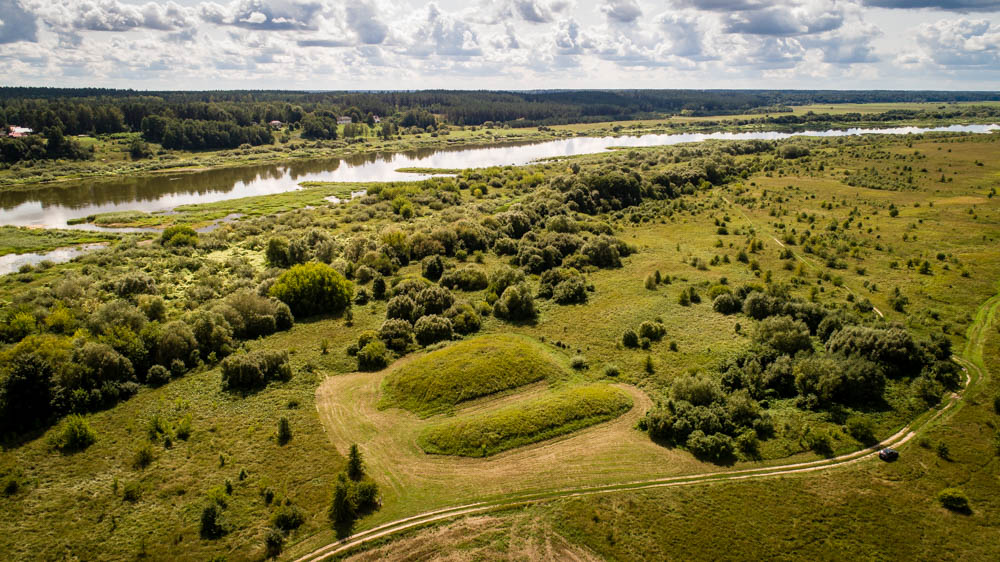Kalnėnai Castle Site, Known as Bišpiliukai

106

0

1
0 out of 5
(0 reviews)
During the medieval era, the Nemunas River, referred to as the "lifeline," and the western lands of the Grand Duchy of Lithuania became targets of the Teutonic Order's aggression from the 13th to the 15th centuries. The wooden Lithuanian castles, fortified on the high hills along the Nemunas River, formed a continuous defensive chain stretching to Kaunas.
During the medieval era, the Nemunas River, referred to as the "lifeline," and the western lands of the Grand Duchy of Lithuania became targets of the Teutonic Order's aggression from the 13th to the 15th centuries. The wooden Lithuanian castles, fortified on the high hills along the Nemunas River, formed a continuous defensive chain stretching to Kaunas.
Bišpiliukai – Georgenburg Castle, 13th – 15th century
It is believed that in the western part of Jurbarkas, in Kalnėnai, was the location of the Georgenburg Castle of the Teutonic Knights. The castle site, situated right next to the Nemunas River, consists of two mounds, and historical records confirm the
presence of a German Order castle here. Built during the height of the Crusades, it was one of the most powerful and long-lasting Teutonic outposts along the Nemunas River. The attacks on the castle were led by the Grand Dukes of Lithuania, Kęstutis and Vytautas. In 1382, Kęstutis' Lithuanian troops used gunpowder cannons for the first time at the walls of Georgenburg Castle. It was only in 1403, under the leadership of Vytautas the Great, that the castle was captured and burned down.
Georgenburg (German for "George's Castle") was first mentioned in 1259 in P. Dusburg's "Chronicle of Livonia." The name of Jurbarkas city is also associated with Georgenburg Castle.
Found a mistake?
Report

 Entertainment
Entertainment
 Sightseeing
Sightseeing
 Food establishments
Food establishments





























 55.063917, 22.74475
55.063917, 22.74475
 Get directions
Get directions









